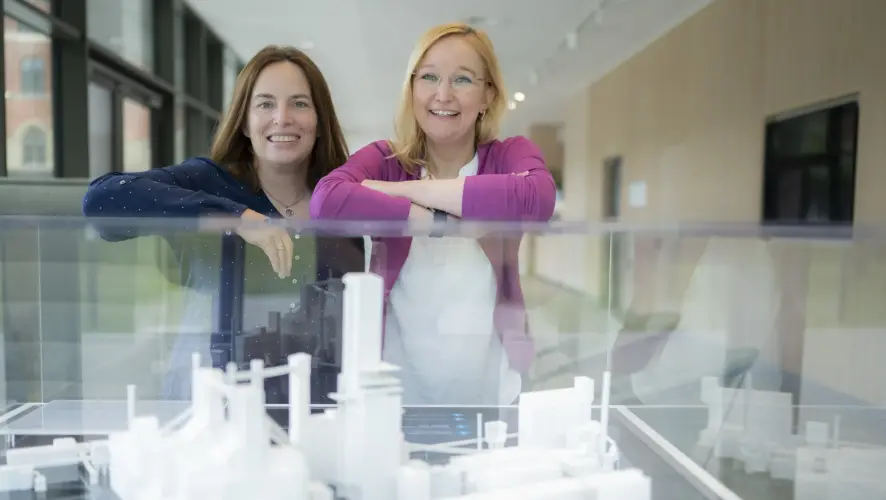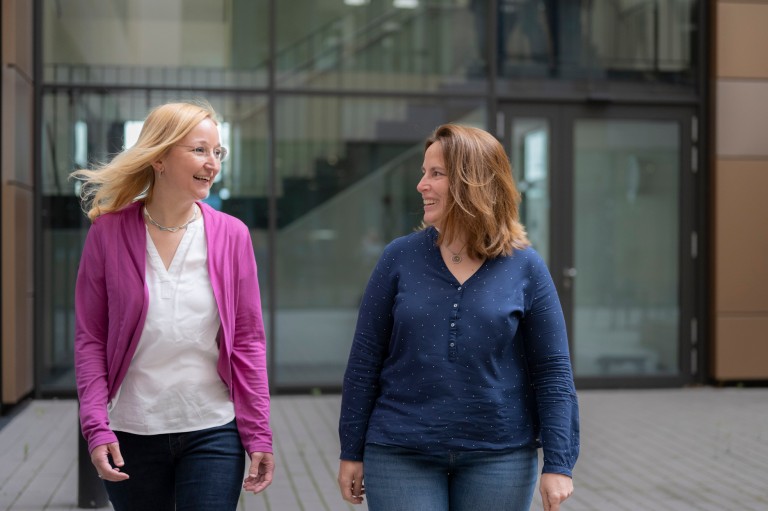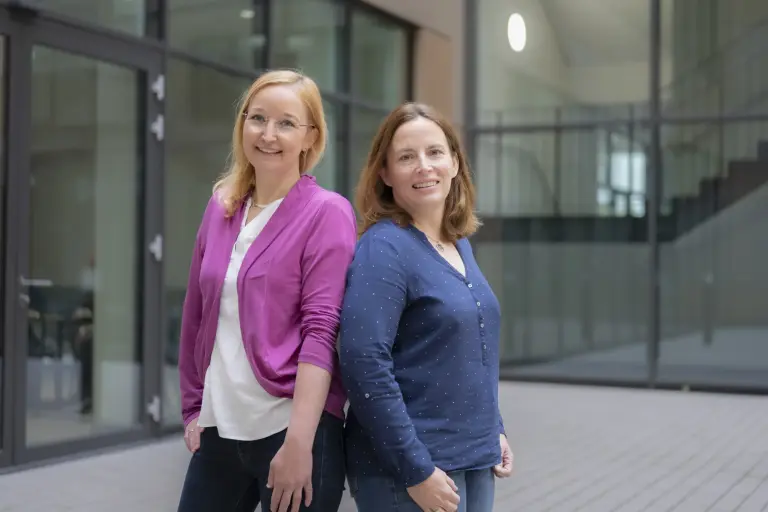Reading time: 7 minutes
Can you each briefly describe your chosen professional background?
Julia Brüne: I originally studied mechanical engineering at RWTH Aachen University and did an internship in the automotive industry during this time. This was my first contact with steel as a material and I quickly recognized its importance. After my studies, I joined thyssenkrupp Steel as a trainee in 2008, initially in sales/engineering for body parts. You quickly realize what a fascinating material steel is, but also that an enormous amount of energy is required to produce it. I found the entire energy supply and distribution sector very exciting and when the opportunity arose, I decided to switch to the energy industry. In this position, I worked intensively on the smelter's energy network. Later, I also had the chance to get to know the company from a strategic perspective as an assistant to the Executive Board. However, I have always remained loyal to the topic of energy and eventually switched to the Energy Management and CO2 Management team, which I have headed up together with Silke since January 2022.
Silke Klapdor: I initially trained as an insurance saleswoman, but I quickly realized that I wanted to develop further. Studying economics, also at RWTH Aachen University, was the logical next step. After graduating, I joined thyssenkrupp Steel in 2007 as a trainee in the Metallurgy Controlling department, where I was already responsible for energy issues from a controlling perspective. When the opportunity arose to switch directly to the energy industry, I jumped at the chance. Initially, I took care of the billing side of energy. After my parental leave, my focus was increasingly on regulatory issues and contractual matters. Two years ago, Julia and I decided that we could also very well imagine ourselves in a management position.
- What was the main reason for taking on a management position together instead of individually?
- What is your team responsible for?
- Do you divide up the responsibilities and areas of work among yourselves?
Julia Brüne: Our manager at the time left the company and there were a lot of discussions about how to proceed. This led us to the conclusion: "Why don't we just do it ourselves?"
Silke Klapdor: Before we submitted the actual application, we first asked various people in the company whether they could imagine such an innovative and new job model. After all, such a tandem model had not yet been implemented at thyssenkrupp Steel.
Julia Brüne: Working part-time as a team leader is a great challenge. At first, it seemed impossible to manage this task in 20 or 25 hours. But then we came up with the idea of taking on the position together. Alone, I would probably have quickly rejected this fixed idea. But as a couple, we recognized the possibility: "Why not?" In the course of our discussions, we developed the idea further. In the end, we decided to give it a go and apply together. As we each had our own story, we each created our own application documents, but wrote a joint cover letter. In this cover letter, we made it clear why we could imagine taking on the team leader position together. The application process proceeded as usual, including individual interviews in which we described from our respective perspectives how we envisioned the tandem model.
Silke Klapdor: On the one hand, our team deals with the whole area of the energy industry and the associated regulatory issues that play a key role in our company. This also includes a wide variety of energy and media contracts. Another important area is CO2 management, which includes complex CO2 reporting within the framework of European and national emissions trading. One focus here is the development of a company-wide CO2 management system. The team is also responsible for supporting the optimization of the energy network during the transformation of our company. We are concentrating on how the energy flows will change in the course of the extensive restructuring and how we can make them efficient and sustainable. These focal points are crucial to making our company fit for the future and environmentally conscious.
Julia Brüne: We have always had many interfaces in our work and therefore knew how each other works, what quirks they have, but also what strengths they have. We complement each other well and that had already been tried and tested. I think that's an important key to our tandem. It doesn't work to simply throw two people with matching CVs together and hope it works out. You need common ground, shared values and the trust that the other person will make decisions that you stand behind. You need to know each other for a while. We made it clear from the start that we didn't want to share the position in the traditional way, with each person only looking after certain tasks or employees. That wouldn't be a real tandem, but a divided team.
Silke Klapdor: Exactly, we discussed it in advance and agreed that a split team was out of the question for us. It wouldn't make sense for everyone to only lead half a team.
Julia Brüne: It's important to us that we both always know what the other is doing. Of course, we each have our strengths. Silke takes a closer look at the controlling discussion than I do, while I tend to deal with technical issues. But we are organized in such a way that we are always informed about each other's tasks. We deliberately do a lot of things together, especially important tasks such as job interviews and appraisals. This requires more coordination, but we have learned to organize it well.






